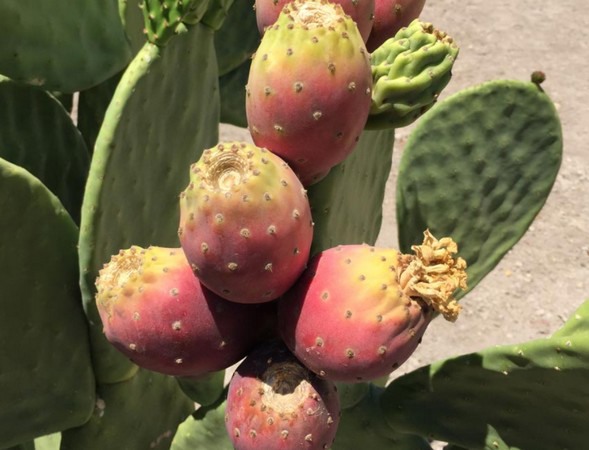Could cactus pear become a major crop like soybeans and corn in the near future, and help provide a biofuel source, as well as a sustainable food and forage crop? According to a recently published study, researchers from the University believe the plant, with its high heat tolerance and low water use, may be able to provide fuel and food in places that previously haven’t been able to grow much in the way of sustainable crops.
Global climate change models predict that long-term drought events will increase in duration and intensity, resulting in both higher temperatures and lower levels of available water. Many crops, such as rice, corn and soybeans, have an upper temperature limit, and other traditional crops, such as alfalfa, require more water than what might be available in the future.
“Dry areas are going to get dryer because of climate change,” Biochemistry & Molecular Biology Professor John Cushman, with the University’s College of Agriculture, Biotechnology & Natural Resources, said. “Ultimately, we’re going to see more and more of these drought issues affecting crops such as corn and soybeans in the future.”
Fueling renewable energy
As part of the College’s Experiment Station unit, Cushman and his team recently published the results of a five-year study on the use of spineless cactus pear as a high-temperature, low-water commercial crop. The study, funded by the Experiment Station and the U.S. Department of Agriculture’s National Institute of Food and Agriculture, was the first long-term field trial of Opuntia species in the U.S. as a scalable bioenergy feedstock to replace fossil fuel.
Results of the study, which took place at the Experiment Station’s Southern Nevada Field Lab in Logandale, Nevada, showed that Opuntia ficus-indica had the highest fruit production while using up to 80% less water than some traditional crops. Co-authors included Carol Bishop, with the College’s Extension unit, postdoctoral research scholar Dhurba Neupane, and graduate students Nicholas Alexander Niechayev and Jesse Mayer.
“Maize and sugar cane are the major bioenergy crops right now, but use three to six times more water than cactus pear,” Cushman said. “This study showed that cactus pear productivity is on par with these important bioenergy crops, but use a fraction of the water and have a higher heat tolerance, which makes them a much more climate-resilient crop.”
Cactus pear works well as a bioenergy crop because it is a versatile perennial crop. When it’s not being harvested for biofuel, then it works as a land-based carbon sink, removing carbon dioxide from the atmosphere and storing it in a sustainable manner.
For more information:
“Five‐year field trial of the biomass productivity and water input response of cactus pear (Opuntia spp.) as a bioenergy feedstock for arid lands.”
Information on Cushman’s cactus research can be found here.

